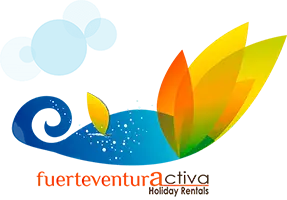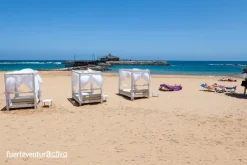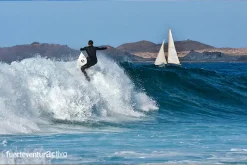What to see in Fuerteventura ?
Salinas del Carmen
That the best salt in the Canary Islands is made in Fuerteventura, is something that people who live on the island already knew. But, now a jury, made up of ten restoration and gastronomy professional experts has endorsed this fact, in the Official Agrocanarias 2020 Marine Salt Contest. The salt flower of the Salinas del Carmen, which is handcrafted, has achieved 3 awards: 2 gold medals in the categories of Best Agrocanarias Sea Salt and Best Canary Islands Sea Salt, and a silver medal in the Virgin Marine Salt category.
For that reason and for much more we want you to know the Salinas del Carmen. We will give you some informations, but do not forget to visit them.
Salinas del Carmen.

The Salinas del Carmen are located about 3 kilometers south of Caleta de Fuste. They are located in front of a spectacular sea level, used since time immemorial to catch fish at low tide. Although the Salinas del Carmen are not the first salt flats artificially raised in Fuerteventura, they are the first to be put into operation. These salt flats date from the end of the 18th century, and were called Salinas de la Hondurilla.
Let us remember that until the Salinas del Carmen came into operation, Fuerteventura supplied itself with salt from puddles only. After more than a century of operation of the Salinas de la Hondurilla, the politician and businessman, Manuel Velázquez Cabrera remodeled and expanded them in 1910, they are called since then, Salinas del Carmen. Salt production, in the first decades of the 20th century, was about 700 tons a year. Currently the Salinas del Carmen produce about 60-70 tons per year.
Despite the fact that the operation of the salt works is very simple, to obtain a good quality of salt requires a lot of care and dedication on the part of the salt workers.
How is the salt of the Salinas del Carmen made?
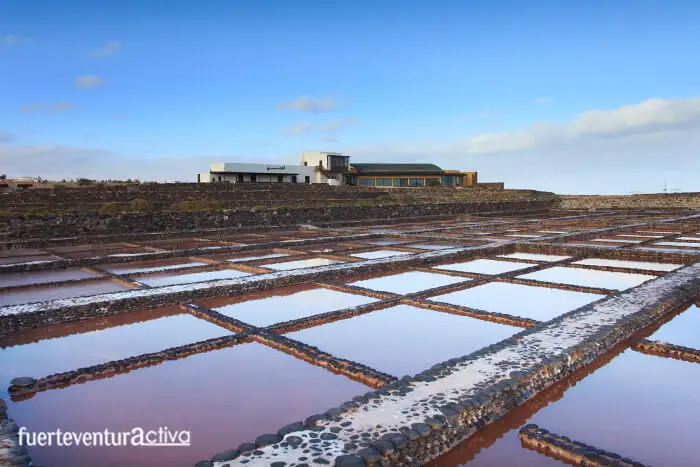
The sea water enters through the saltadero, one of the most spectacular places in the Salinas del Carmen. During high tide or storm days, the waves crash violently against the rocks of the saltadero. The seawater is driven into a container, a kind of impluvium. From there it is channeled to a large pool, where, thanks to the sun, the concentration of salt increases. From this reservoir, the water is distributed to the cookers, small rectangular “plots” about 40 cm deep, whose walls are made of stone and clay. The cookers are, in turn, divided into pits

In the cookers the force of the wind and the sun’s rays increase the temperature of the water, producing the crystallization of the salt. Once the sodium chloride is crystallized, it is taken to the warehouse, protecting the salt from humidity and sporadic rains.
The warehouse is the rectangular-shaped building with a gabled roof that we see near the whale’s skeleton. It serves as a logistics point. From there the salt is packaged and distributed, either to the Salt Museum or to other establishments where it is sold.
Did you know that various types of salt could be extracted from the Salinas del Carmen?
From unique salt flats like those of Carmen, it is possible to manufacture various salt products. Among them they would highlight the flower of salt, flake salt, foam salt, salt sugar, ground coarse salt, ground salt, liquid salt, iodized fine salt and spiced salt.
The “foam salt”, due to its great gastronomic quality and its richness in trace elements, is one of the most demanded Gourmet products. This fine-grained, high-quality salt is obtained thanks to the daily shake of the “salt cloth” that is made in the pit.
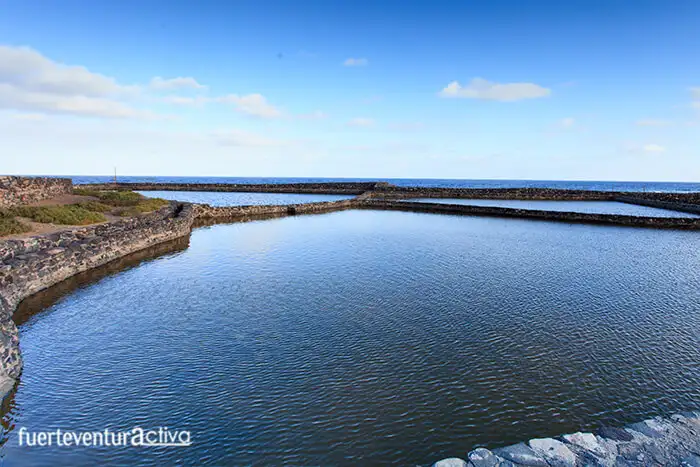
The Salt Museum In addition to enjoying a beautiful natural environment, in the Salinas del Carmen you can learn more about its history at the Salt Museum. The Salt Museum offers you two complementary tours, one inside and one outside through the salt flats itself.
The museum center is educational and interactive. Here, children and adults alike enjoy. It has videos, interactive models, tablets, and information panels, where photographs and infographics have more prominence than texts. In addition, the Salt Museum has several spaces where original ethnographic elements are exposed, making this place a small corner where the hard work of the salt man is honored.
Frequently asked questions about the Salinas del Carmen:

>What is the visiting hours of the Salinas del Carmen?
The Salinas del Carmen and the Salt Museum are open from Tuesday to Saturday from 9:30 a.m. to 5:30 p.m.
How much are the tickets to the Salt Museum?
- Children from 0 to 3 years old: free.
- Children from 3 to 11 years old: € 3 Adults + 11 years: € 6
You also have the option of buying a “Joint” ticket that will also allow you to visit the Majorero Cheese Museum and the Mills Interpretation Center. The cost of the joint ticket is € 7.50 for children from 3 to 11 years old and € 11.50 for adults.
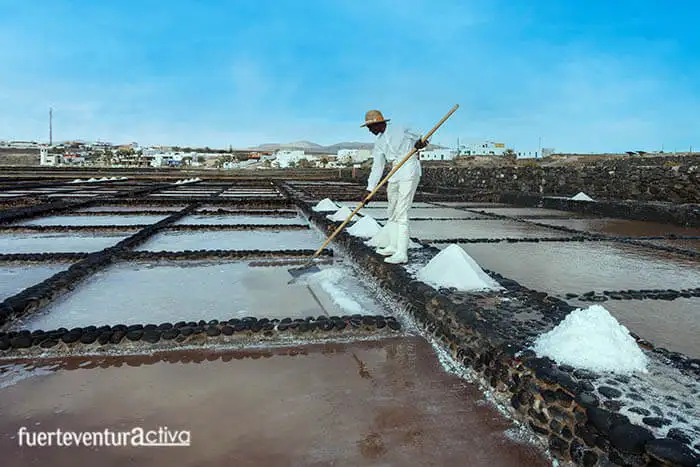
Is there a discount for Canarian residents?
Yes, the price for Canarian residents is € 3 for people over 11 years old, and € 2 for children from 3 to 11 years old. You also have special prices on the joint ticket for Canarian residents: € 3 for children and € 5.50 for adults.
Why is there a whale skeleton in the Salinas del Carmen?
Both the 20-meter-long skeleton of the Salinas del Carmen, as well as others that we can see around the island, belong to the project “La Senda de los Cetáceos”. This project gives a second life to the cetaceans stranded on the coast of Fuerteventura.
The skeleton of the Salinas del Carmen belongs to a female fin whale that stranded on April 18, 2000, off the coast of Majanicho.
Fuerteventura4 Fuerteventura7
